AI in Plant Breeding: Disease Resistance Insights
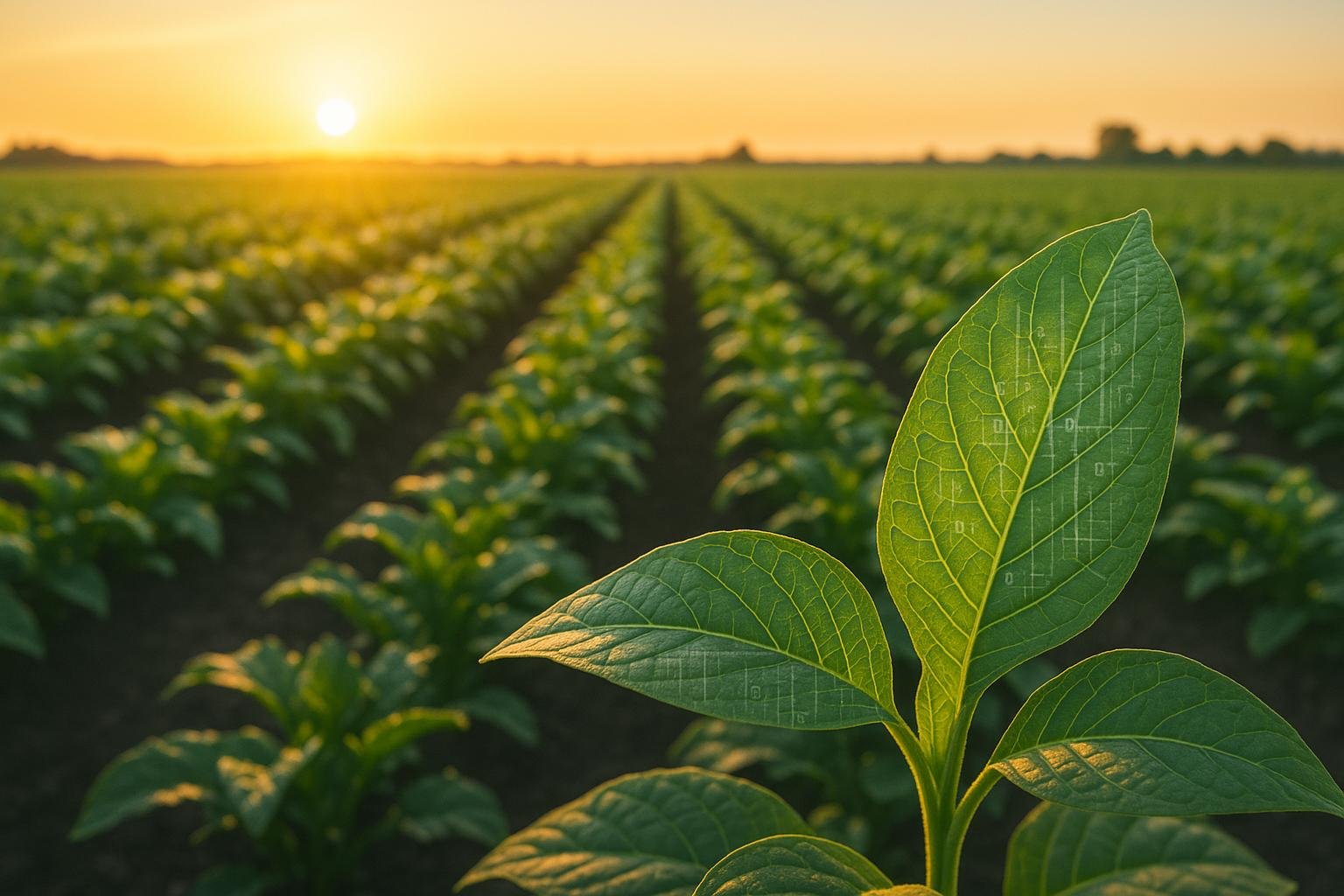
AI is changing plant breeding by making it faster and more accurate to develop disease-resistant crops. Here's a quick summary of how:
- Faster Breeding: AI can cut breeding cycles from decades to just a few years by predicting plant performance before planting.
- High Accuracy: Tools like machine learning and deep learning analyze plant genetics and images with over 90% accuracy, spotting disease resistance traits that humans might miss.
- Gene Editing: AI helps scientists use CRISPR-Cas9 to precisely edit genes, improving disease resistance in crops like corn and tomatoes.
- Real-World Impact: Companies like Phytoform and Heritable Agriculture are already using AI to enhance crop resilience and reduce breeding timelines.
AI’s ability to process massive datasets, integrate genetic and environmental data, and predict plant traits is transforming agriculture. While challenges like data quality and cost remain, AI offers a powerful tool to improve global food security.
Plant Breeding’s Moonshot: Inside the Next Generation of Plant Breeding

AI Technologies for Plant Disease Resistance
The field of plant disease resistance breeding is undergoing a major transformation, thanks to three key AI technologies. These tools handle massive datasets and identify patterns that are nearly impossible to detect manually. Let’s explore how these technologies are shaping the future of agriculture.
Machine Learning for Disease Identification
Convolutional Neural Networks (CNNs) are now the cornerstone of automated plant disease detection. These deep learning models analyze plant images with remarkable accuracy, pinpointing disease symptoms on leaves, stems, and other parts. For example, models like VGG-16, GoogleNet, and AlexNet have been used to classify diseases in crops like rice and tomatoes, achieving accuracies above 91% - and in some cases, even up to 97% when data augmentation techniques are applied.
Vision Transformers (ViTs) are pushing the boundaries of disease identification further. Unlike CNNs, which focus on localized image features, ViTs employ self-attention mechanisms to analyze spatial relationships across entire images. This broader perspective improves classification accuracy, making them a powerful tool for plant disease diagnostics.
AI’s role extends beyond image analysis to large-scale agricultural monitoring. Drones equipped with AI-driven sensors are transforming how farmers survey their fields. For instance, a U-Net model trained on multispectral images achieved 97.13% accuracy in detecting wheat yellow rust, while another study using UAV imagery reported an 89.3% accuracy rate. Federated Learning is also gaining traction, allowing farms and research institutions to collaboratively train AI models without sharing sensitive raw data.
While these imaging technologies are impressive, integrating molecular data offers even deeper insights into plant defenses.
Combining Multi-Omics Data
AI’s real power in breeding for disease resistance lies in its ability to merge diverse biological datasets. Multi-omics integration brings together data from genomics (DNA sequences), transcriptomics (gene expression), and proteomics (protein interactions) to create a complete view of plant biology. This approach reveals intricate regulatory mechanisms and interactions that traditional methods often overlook.
Deep learning algorithms excel at managing the complexity and scale of multi-omics datasets. A case in point: researchers studying rice combined transcriptomic and translatomic data from the Zhenshan 97 and Minghui 63 varieties. This allowed them to identify key genes with allele-specific translation efficiency, providing new targets for hybrid rice development. By leveraging comprehensive molecular profiles rather than relying on single datasets, breeders can more accurately predict how plants will respond to diseases.
AI-Guided Gene Editing
AI is also transforming gene editing, making it faster, more precise, and highly predictive. This is particularly evident in CRISPR-Cas9 applications, where AI helps scientists identify the best genetic targets and forecast the outcomes of modifications on plant disease resistance.
One standout example comes from Phytoform Labs, which used CRISPR-Cas technology to develop compact tomato plants designed for vertical farming. These plants not only maintain strong disease resistance but also produce up to 400% more fruit per square meter, enabling denser planting and quicker harvest cycles.
AI tools are also advancing gene editing by designing synthetic promoters and optimizing genomic functions. This reduces both the time and cost of editing while allowing precise introduction of desired traits at the nucleotide level. The impact of these innovations is reflected in the plant breeding market, which was valued at $14.8 billion in 2023 and is projected to grow at a 12.8% annual rate through 2032.
Case Studies: AI Applications in Disease Resistance
AI is making waves in plant breeding, delivering tangible results across various crops. These real-world examples highlight how AI is being used to tackle specific disease challenges, from managing seasonal resistance issues to speeding up breeding cycles.
AI in Oat Breeding for Seasonal Disease Resistance
The USDA Agricultural Research Service (USDA ARS) has achieved remarkable progress in fighting crown rust, a highly aggressive pathogen in oat farming. Crown rust is so destructive that resistance genes in new oat varieties often fail within just five years.
To combat this, Dr. Craig Carlson's team at USDA ARS developed a deep-learning model capable of identifying pustules - distinct orange-yellow lesions filled with rust spores - even under inconsistent lighting conditions that could confuse human observers. Dr. Carlson explains:
"AI enables us to rapidly and accurately measure signs and symptoms of diseases. Our deep‑learning model recognizes pustules (oblong orange‑yellow lesions on leaves containing rust spores) even under variable light conditions, something a human can't do reliably at scale."
– Dr. Craig Carlson, Research Geneticist, USDA ARS
By combining image-based growth data with whole-genome information, the team has linked minor-effect genes to complex resistance traits, speeding up breeding cycles. Additionally, AI-driven selection models, trained on weather, soil, multispectral, and genotype data, can predict how experimental oat lines will perform in different environments. Dr. Carlson adds:
"Incorporating genomics and phenomics, we can predict performance before seed hits the field. Selection models trained on weather, soil, multispectral data, and genotype now forecast which experimental lines will hold up in various environments, potentially saving years of field trials. Together, these tools squeeze the breeding cycle and help us release improved varieties faster."
– Dr. Craig Carlson, Research Geneticist, USDA ARS
This approach is inspiring similar efforts to accelerate crop development timelines across other plant species.
Heritable Agriculture's AI Platform
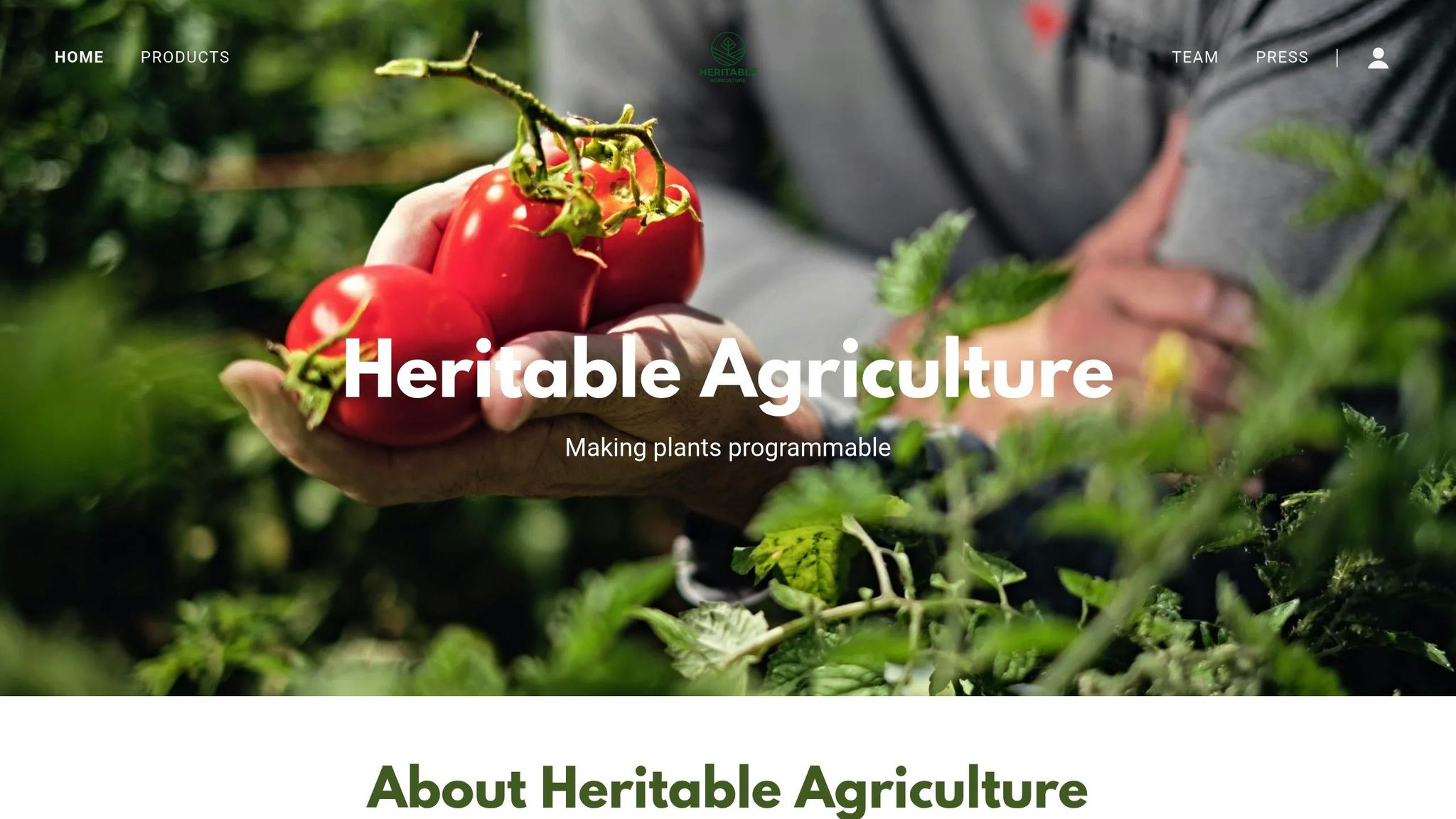
Heritable Agriculture is revolutionizing crop improvement timelines with its AI-powered platform. By analyzing data from roughly 14,000 plant samples across diverse crops and locations, the company has built a robust system for predicting effective genetic modifications. While traditional breeding can take 7–10 years to produce a viable new crop variety, Heritable Agriculture's AI reduces this timeline to just 12–18 months.
In partnership with ArborGen, the platform has cut loblolly pine improvement timelines in half. Dr. Brad Zamft, CEO and co-founder of Heritable Agriculture, elaborates:
"Our AI‑powered biotechnology platform has potential to address key challenges faced by the agriculture industry, including lowering the costs of crop improvement, boosting yields, enhancing disease resistance, and accelerating the development of new plant varieties."
– Dr. Brad Zamft, CEO and co‑founder of Heritable Agriculture
The platform's approach integrates multi-omics data, predictive breeding, and high-throughput gene editing to identify key genes, design precise genome edits, and predict plant performance under specific conditions. These advancements highlight how AI is reshaping the future of genetic improvement for various crops.
CRE.AI.TIVE Platform for Corn Disease Resistance

Phytoform's CRE.AI.TIVE platform is setting a new standard for improving corn disease resistance through AI-guided gene editing. In June 2025, Phytoform partnered with Corteva to target two of the most damaging diseases affecting U.S. corn growers. The platform excels at analyzing millions of DNA control region variations to pinpoint precise modifications that enhance disease resilience. It makes targeted edits to activate native resistance genes without introducing GMO traits.
William Pelton, Phytoform's co-founder, explains:
"Corteva had these genes in their germ plasm, so the disease resistance was basically there but inactive. That's exactly where we can help, and without creating GMO traits. We can help them fine tune their existing genome to activate those genes and confer that disease resistance."
– William Pelton, Phytoform co‑founder
The collaboration focuses on optimizing the expression of two critical genes for corn disease resistance. Dr. Will Pelton, Phytoform's chief executive, highlights the broader implications:
"By accelerating what nature can achieve through our shared technologies, we're taking steps to make global food production more sustainable and secure for one of the world's most important crops."
– Dr. Will Pelton, chief executive of Phytoform
This partnership aims to significantly reduce the time between discovering traits and deploying them in the field. Reflecting on the potential of these advancements, Dr. Nicolas Kral, Phytoform's chief technology officer and co-founder, notes:
"This work shows how AI and biology can come together to build a more climate‑resilient food system. We're not just fixing plants, we're future‑proofing agriculture."
– Dr. Nicolas Kral, Phytoform chief technology officer and co‑founder
sbb-itb-4d6a8dd
🚀 Ready to Reinvent Your Garden?
Join thousands of homeowners who have transformed their gardens using our AI design tool. Upload one photo to explore endless possibilities.
Get your AI garden designs →Benefits and Challenges of AI in Disease Resistance Breeding
AI is revolutionizing plant breeding by enabling faster and more precise identification of disease resistance traits. However, this progress comes with its own set of challenges. For researchers, breeders, and agricultural stakeholders, understanding these advantages and limitations is essential when considering AI's role in modern agriculture. Let’s take a closer look at how AI stacks up against traditional breeding methods and the hurdles it faces.
AI vs. Conventional Breeding Methods
AI-driven breeding introduces a level of efficiency and precision that traditional methods struggle to match. Here's a side-by-side comparison:
| Aspect | AI-Driven Breeding | Conventional Breeding |
|---|---|---|
| Speed | About 2 generations | Around 7 breeding cycles (seasons) |
| Accuracy | Up to 97.99% in disease detection | Relies heavily on human expertise |
| Cost | High initial investment, lower long-term costs | Lower upfront cost, higher ongoing expenses |
| Scalability | Processes thousands of samples simultaneously | Limited by manual labor and field capacity |
| Data Processing | Analyzes complex genetic interactions | Uses simpler, linear models |
| Environmental Forecasting | Predicts performance across various conditions | Requires extensive field trials |
One of AI’s most striking advantages is speed. While traditional breeding often requires seven growing seasons to complete a cycle, AI-driven genomic selection can achieve similar results in just two generations. This rapid turnaround is crucial in responding to emerging diseases and shifting environmental conditions.
AI also excels in accuracy. For instance, a hybrid model with attention mechanisms was able to achieve 97.99% accuracy in assessing wheat stripe rust severity - far surpassing the capabilities of conventional models. Beyond precision, AI’s ability to analyze complex genetic interactions allows breeders to make more informed decisions. Studies have shown that AI-assisted breeding has led to yield increases of up to 25% and a 30% improvement in disease resistance for crops like wheat and rice.
Challenges in AI Application
Despite its promise, integrating AI into disease resistance breeding is not without obstacles.
First, collecting accurate and high-quality data is expensive. It often requires advanced sensor networks and meticulous quality control to avoid issues like data noise or incomplete datasets, which can undermine model reliability.
Then there’s the cost of implementation. AI adoption demands significant investment in hardware, skilled personnel, and ongoing maintenance. As the scope of data expands to include more crop varieties and disease types, ensuring that machine learning models remain scalable and effective becomes increasingly complex.
Another challenge lies in the interpretability of AI models. If the outputs are too complicated to understand, farmers and agronomists may struggle to turn AI insights into actionable steps. Additionally, integrating AI with current farming practices often requires overhauls in infrastructure and processes, which can be daunting for many organizations.
Data ownership and security also raise ethical and legal concerns. Who owns the data collected by AI tools? How can it be safeguarded? These questions remain unresolved. Social resistance is another hurdle, as fears about job displacement, privacy, and unfamiliarity with new technology can slow adoption. On top of that, the lack of clear regulations or standardized protocols for agricultural AI creates uncertainty for stakeholders.
Addressing these challenges requires a collaborative approach. As Anjana J. Atapattu from the Coconut Research Institute highlights:
"To overcome the obstacles in achieving AI in agriculture, it is suggested that participatory training, flexible platforms, decentralized knowledge sharing, independent algorithm audits, and responsible open data protocols be used to keep farmers at the center through cooperation, viability from a financial standpoint, empathy, and thoughtful solutions across the global diversity of agriculture."
Successfully balancing AI’s groundbreaking potential with the realities of practical application will be critical to turning these technological advancements into tangible solutions for disease resistance breeding.
Future Directions and Opportunities
AI-driven plant breeding is on the brink of transforming how we create disease-resistant crops. As the technology evolves, researchers, breeders, and agricultural organizations are identifying key areas to focus on, ensuring AI becomes deeply embedded in plant breeding processes.
Scaling AI for Different Crops
So far, most AI efforts have centered on staple crops like corn, wheat, and soybeans. The challenge now is to extend these methods to other crops that are vital for millions but often overlooked in research.
One promising approach is transfer learning. This method allows AI models trained on well-researched crops to be adapted for species with limited genomic data. For instance, patterns of disease resistance identified in wheat could help guide breeding strategies for lesser-studied grains.
Another exciting area is the integration of multi-omic data - combining genetic, environmental, and other data sources. This can help predict breeding potential even when traditional field trials are limited. For crops with sparse data, this approach could be a game-changer.
Take Heritable Agriculture as an example. This company, launched in 2025 from Google's X lab, developed an AI platform trained on 14,000 plant samples. Their collaboration with ArborGen aims to revolutionize loblolly pine tree breeding, potentially cutting the time needed for improvement in half. This demonstrates how AI can extend beyond traditional agriculture into forestry.
The concept of Breeding 4.0 is also gaining traction. This approach combines biotechnology with vast data streams to create tailored breeding strategies. As Steven Tanksley, Professor Emeritus at Cornell University, puts it:
"We have to double the productivity per acre of our major crops if we're going to stay on par with the world's needs."
"Plant breeding has entered the engineered phase", Tanksley adds, highlighting the urgency of adapting to environmental changes. "You have to have a faster breeding process to respond to that."
However, to fully harness these advancements, better data systems are essential, which leads us to the next challenge.
Improving Data Access
The success of AI in plant breeding hinges on high-quality data, but current datasets often fall short. The issue isn’t computing power - it’s the lack of accessible, consistent, and representative data.
One major problem is that existing datasets are heavily skewed toward large industrial farms, leaving small-scale operations and developing regions underrepresented. This creates a gap in understanding the diverse agricultural contexts AI needs to address.
Another challenge is data standardization. Without consistent formats and collection methods, it’s tough to integrate data from various sources like research institutions, seed companies, and farmers. This lack of uniformity hampers the creation of comprehensive datasets essential for training AI systems.
Fortunately, solutions are emerging. Open-access genome databases are expanding rapidly, offering vast amounts of genetic data. For example, there are now genome-wide genotyping datasets for over 80,000 wheat accessions, 4,000 maize samples, and 20,000 barley samples. These resources provide a foundation for AI models capable of working across different genetic and environmental conditions.
Crowdsourcing is another promising avenue. By involving farmers in data collection, researchers can gather diverse, real-world insights into growing conditions and practices - critical for building robust AI systems. Additionally, the adoption of FAIR data principles (Findable, Accessible, Interoperable, and Reusable) is gaining momentum, helping to ensure data is more usable and widely shared.
Regulatory and Ethical Considerations
While technical and data challenges are significant, ethical and regulatory issues are equally pressing. The rapid pace of innovation in AI and genetic technologies has outstripped existing regulatory frameworks, creating a complex landscape.
Data ownership and privacy are top concerns. According to one study, 78% of farmers worry about their data being shared or sold without their consent. This highlights the need for clear guidelines on data governance.
Public attitudes toward gene-edited crops are generally more positive than toward transgenic products, but regulators must still ensure these innovations are safe and ethically sound. Transparency and accountability are key to maintaining public trust in AI applications.
Algorithmic bias is another risk. If AI systems are trained primarily on data from large, industrialized farms, they could reinforce existing inequalities, leaving smaller farms and less-developed regions at a disadvantage. To address this, ethical principles like fairness, transparency, and accountability are becoming central to responsible AI development.
The idea of Human-Centered AI (HCAI) is gaining traction in agriculture. This framework emphasizes that AI should support farmers, not replace them, by keeping human expertise and local knowledge at the forefront of decision-making.
Moving forward, collaboration is essential. Researchers, farmers, tech companies, and policymakers must work together to address concerns about data privacy, algorithmic fairness, and equitable access. With the agricultural AI market projected to grow from $1.1 billion in 2019 to over $3.8 billion by 2024, the decisions made now will shape the future of farming for decades to come.
Conclusion
AI is transforming how we tackle plant disease resistance, making detection, prediction, and even gene editing faster and more precise. Traditional methods, which relied heavily on visual checks and long field trials, are being replaced by AI models that boast 90% accuracy and a 6.8% improvement in predicting various disease traits. Perhaps most strikingly, AI has the potential to reduce breeding cycles from decades to just three years.
This evolution moves us away from outdated single-gene resistance strategies, which pathogens like oat crown rust can overcome in as little as five years. Instead, AI enables the use of complex, multi-gene approaches to combat diseases more effectively. Case studies have already shown how these advancements are delivering measurable benefits in crop resilience and breeding programs.
From an economic perspective, AI is reshaping agriculture in a big way. The market for AI in agriculture is expected to grow from $1.7 billion in 2023 to $4.7 billion by 2028. This is a critical development considering that plant diseases can reduce crop yields by as much as 40% annually. However, challenges like inconsistent data quality, limited accessibility, and the need for standardization still need to be addressed. Regulatory systems must also keep pace with these rapid advancements, and human expertise remains vital to guide AI-driven decisions.
Looking ahead, the potential for AI in plant breeding is enormous. Emerging innovations like digital twinning, whole-season modeling, and federated learning could further strengthen crop resilience. As Scott Angle from the University of Florida puts it:
"AI is the Swiss Army knife of technologies. Literally every aspect of farming can be improved with adoption of AI-driven innovation."
AI is not just speeding up breeding cycles or improving accuracy - it’s driving economic growth and paving the way for a more resilient and sustainable food system. This progress will require close collaboration among researchers, farmers, tech companies, and policymakers to ensure its full potential is realized.
FAQs
How does AI help develop disease-resistant crops faster and more accurately than traditional methods?
AI is transforming the way we develop disease-resistant crops, making what used to be slow and labor-intensive processes much faster and more efficient. With the power of advanced algorithms, AI can sift through massive datasets, pinpoint key resistance genes, and even predict how plants might react to different diseases - all with impressive accuracy.
By automating tasks such as high-throughput phenotyping and genetic selection, AI dramatically cuts down breeding cycles. It minimizes the need for extended field trials, enabling researchers to concentrate on the most promising crop varieties. The result? Farmers gain access to resilient crops more quickly and with greater reliability, ensuring they can tackle agricultural challenges head-on.
What are the biggest challenges in using AI for plant breeding, and how can they be solved?
One of the big hurdles in using AI for plant breeding is the need for high-quality, standardized data. Without dependable data, AI models can end up making unreliable predictions. Another challenge lies in the complexity of genetic traits and the limited genetic diversity available, which makes training effective models tricky. On top of that, unpredictable weather patterns and the growing demand for explainable AI add extra layers of difficulty.
To tackle these issues, we need better data collection methods and advanced phenotyping technologies. Adding more diverse genetic datasets can also help strengthen AI models. Building explainable AI systems is key to fostering trust and transparency in their predictions. Techniques like transfer learning and sensor networks offer promising ways to improve the accuracy and scalability of AI in plant breeding.
How does using multi-omics data improve AI’s ability to predict plant traits and disease resistance?
By combining multi-omics data - like genetic, transcriptomic, proteomic, and metabolomic information - AI can delve deeper into the intricate factors that shape plant traits, such as disease resistance. This layered method reveals biological interactions and regulatory networks, enabling AI to pinpoint resistance genes and traits with much greater accuracy.
With access to this robust dataset, predictive models become sharper, giving researchers the tools to better anticipate how plants will react to diseases. This not only speeds up the creation of crops with natural disease resistance but also supports more sustainable and resilient farming systems.
🎨 Visualize Your Dream Garden Today!
Transform any outdoor space into a professional landscape design in minutes. Just upload a photo, choose your style, and let our AI do the rest.
Start your garden transformation now →Related posts
Related Articles

Top Plants for Carbon Sequestration
Explore how selecting the right plants for your garden can enhance carbon sequestration, support local ecosystems, and promote sustainability.

Optimizing Deep Learning for Plant Disease Detection
Explore how deep learning optimizes plant disease detection with advanced techniques for better accuracy, efficiency, and real-time monitoring.
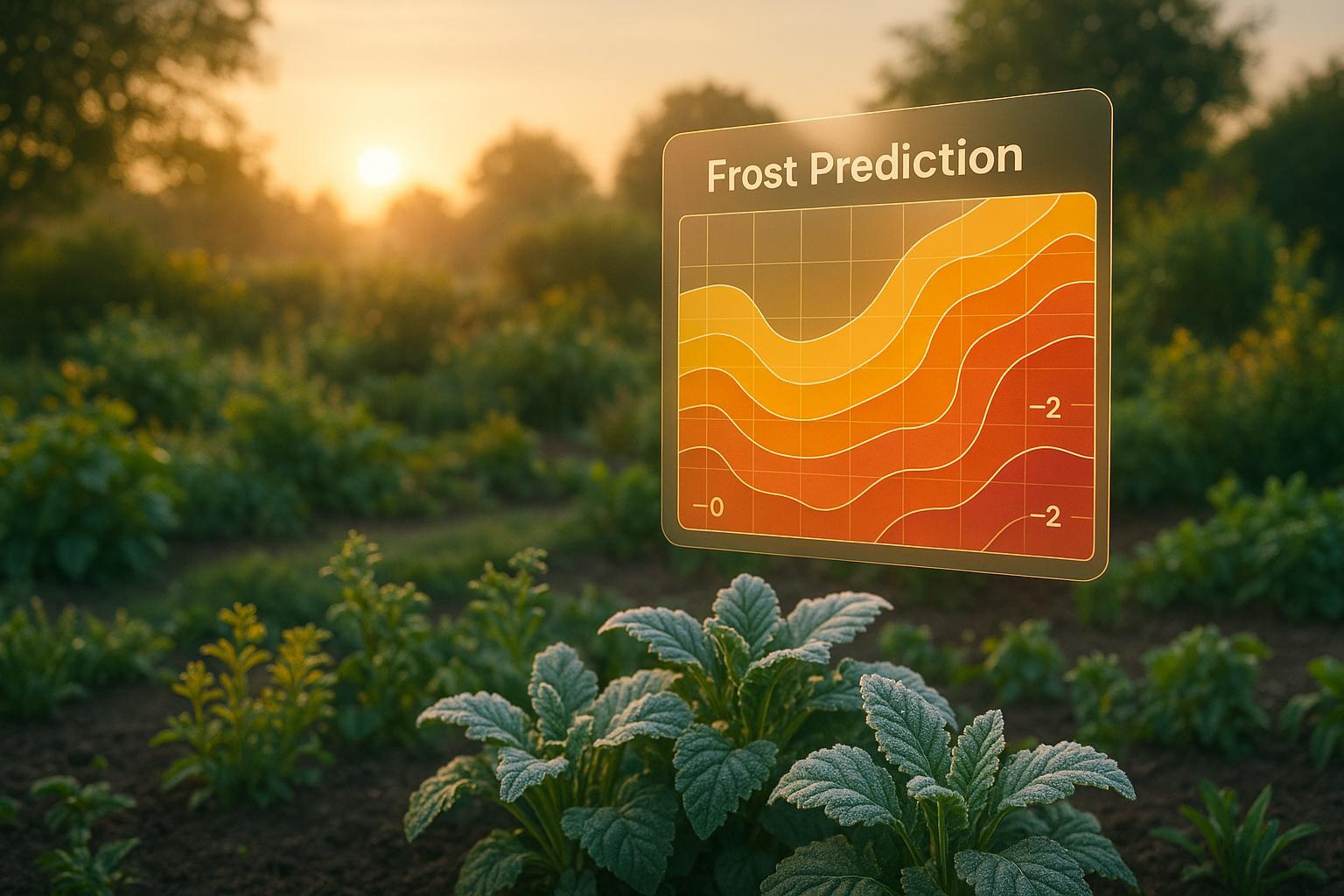
AI Frost Maps vs. Traditional Methods
AI frost maps offer precise, real-time frost predictions that surpass traditional methods, helping gardeners safeguard their plants effectively.
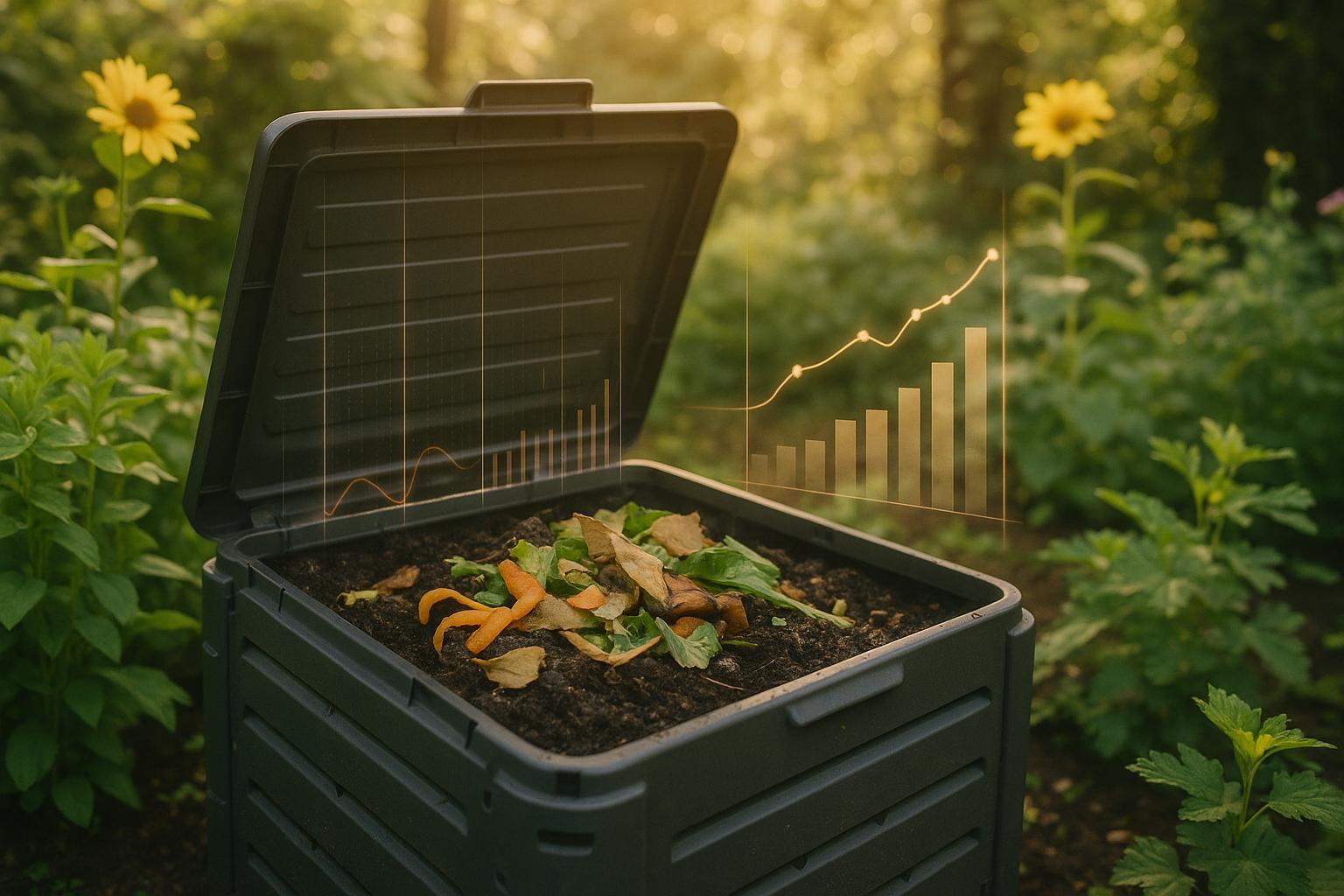
AI Models for Compost Decomposition Rates
Explore how AI models are revolutionizing composting by enhancing efficiency, reducing costs, and improving compost quality through real-time monitoring and predictions.
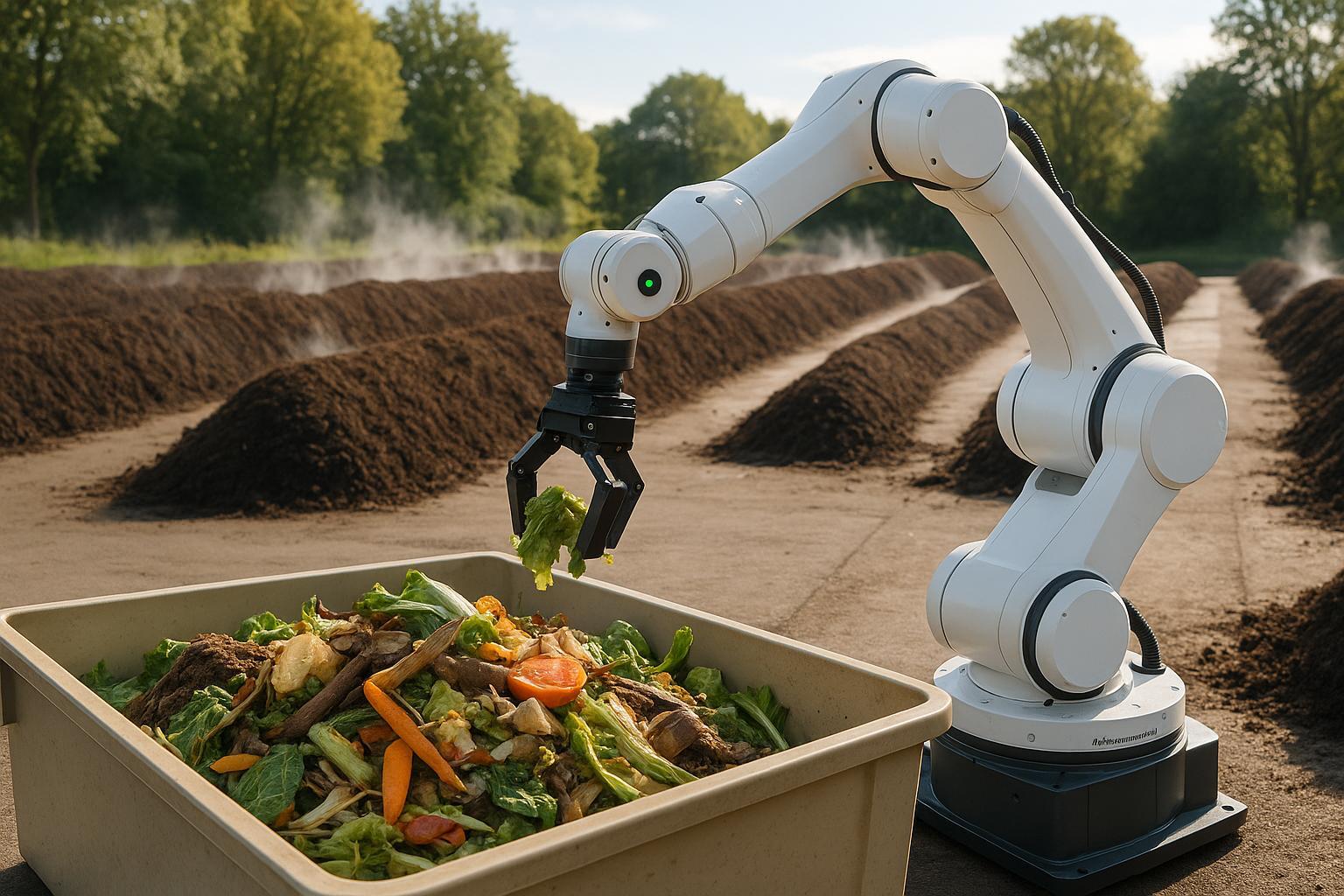
AI in Composting: Emission Control Insights
Explore how AI is revolutionizing composting by reducing emissions, enhancing sorting accuracy, and improving overall efficiency.
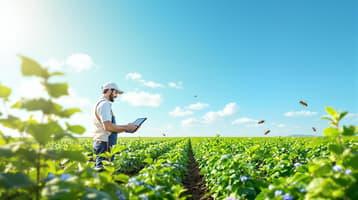
How AI Deploys Microbial Pest Control
Explore how AI and microbial pest control are revolutionizing agriculture with precise, efficient pest management solutions.